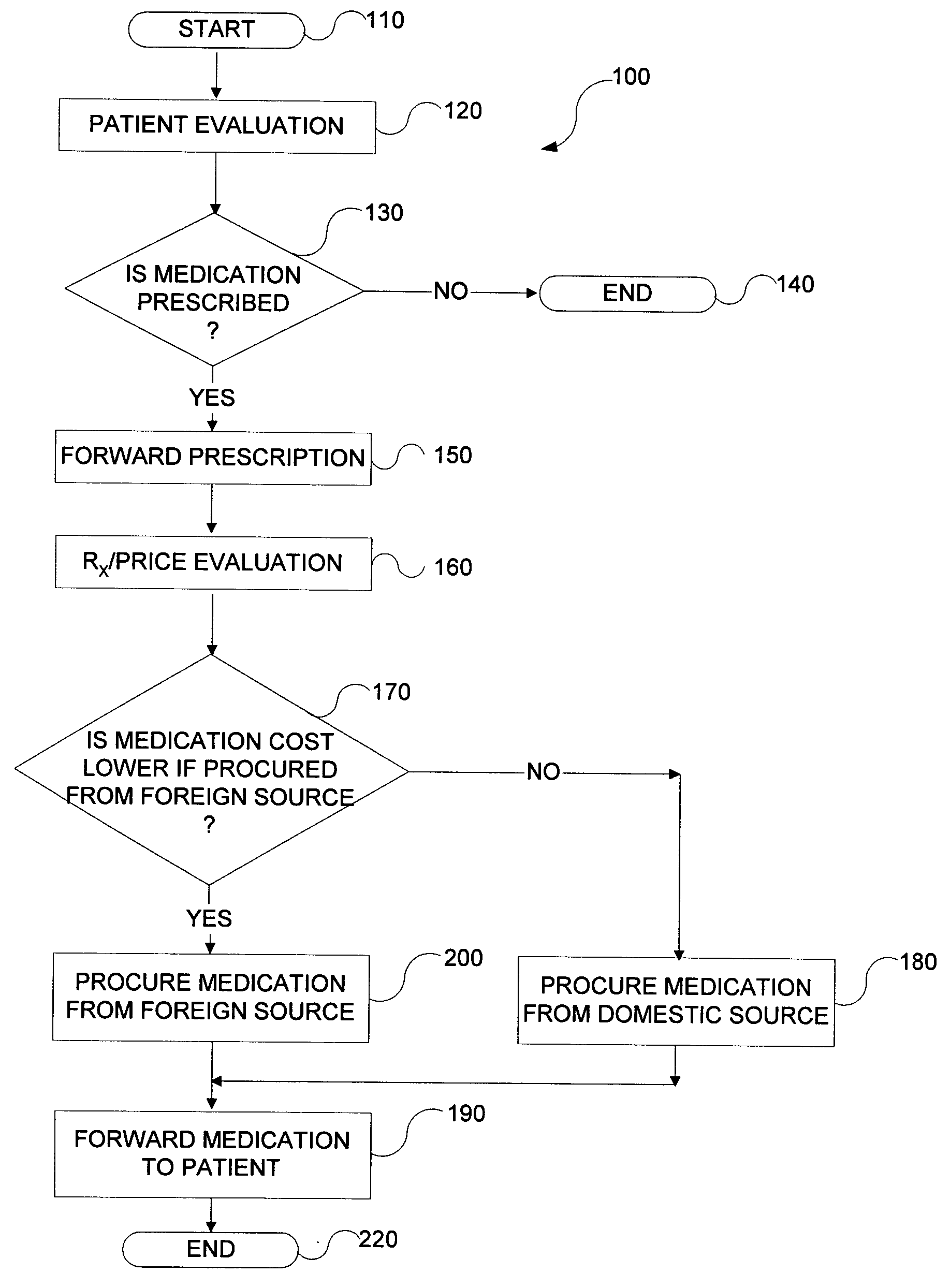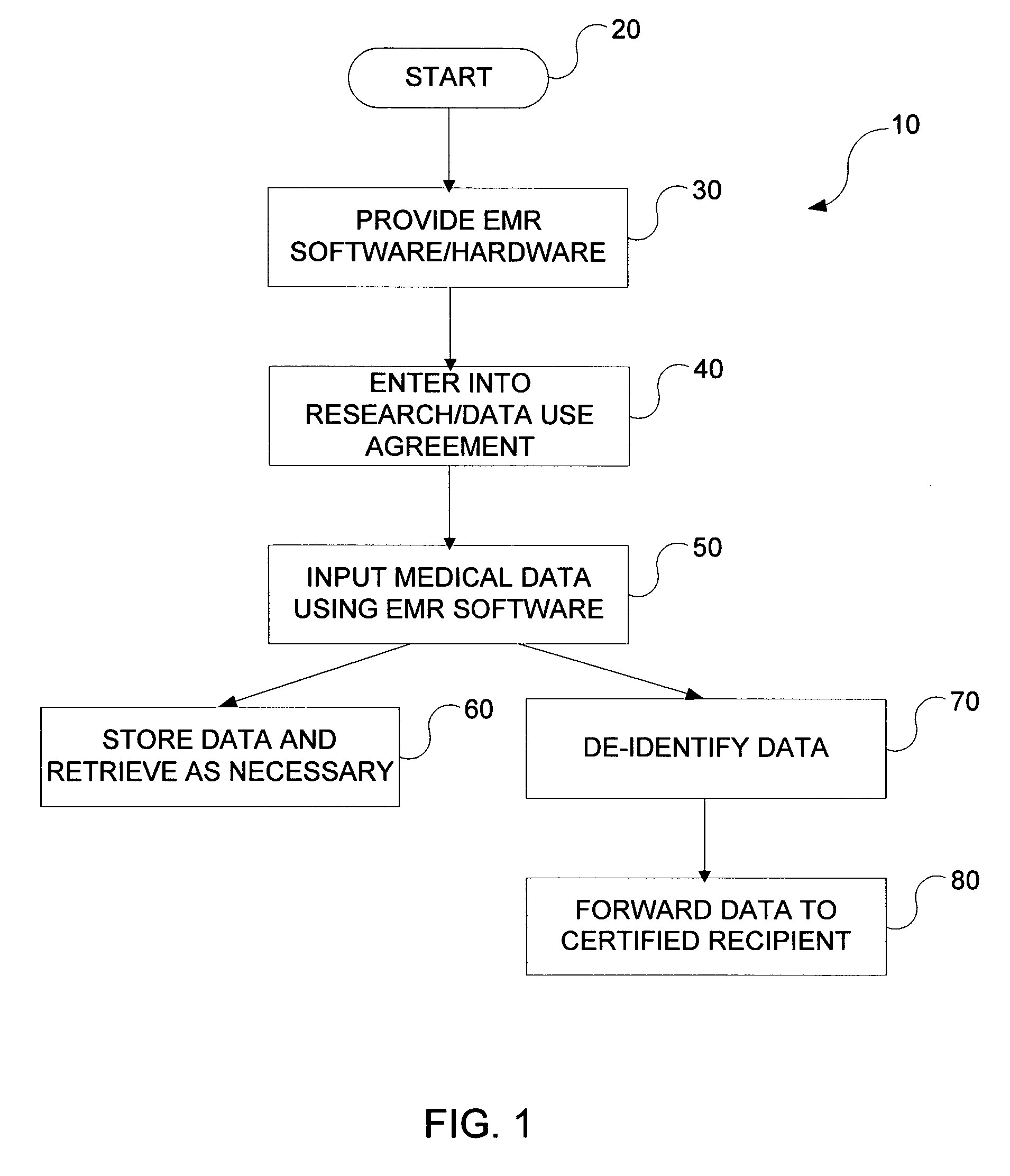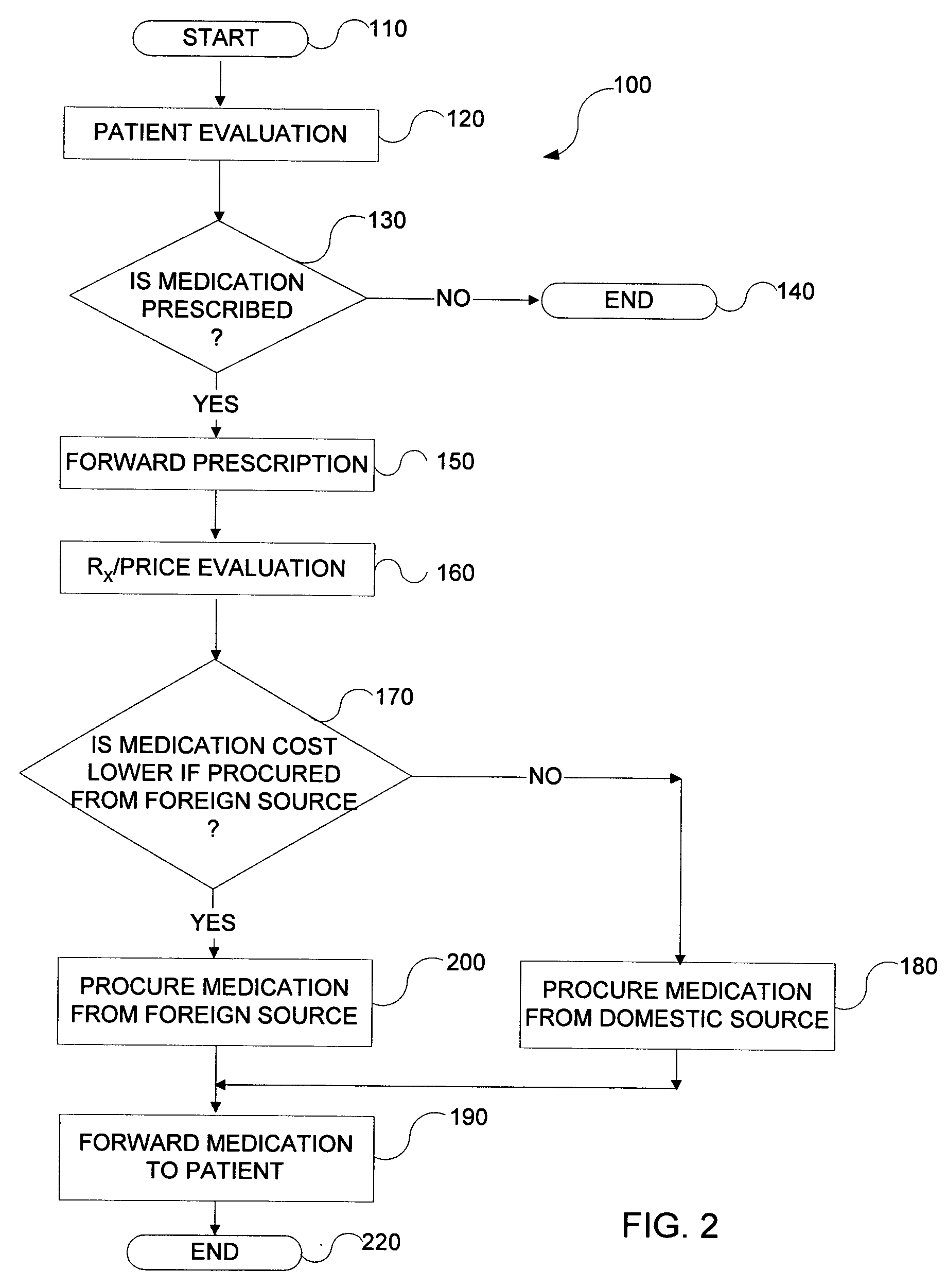Methods for dispensing prescriptions and collecting data related thereto
a technology for collecting data and dispensing prescriptions, applied in data processing applications, drugs and medications, instruments, etc., can solve problems such as security breaches, electronic transactions transmitted via the internet, and substantial difficulties in numerous medical practices regarding hipaa implementation, and achieve the effect of more cost effectiv
- Summary
- Abstract
- Description
- Claims
- Application Information
AI Technical Summary
Benefits of technology
Problems solved by technology
Method used
Image
Examples
Embodiment Construction
[0022] The detailed description set forth below is intended as a description of the presently preferred embodiment of the invention, and is not intended to represent the only form in which the present invention may be constructed or utilized. The description sets forth the functions and sequences of steps for constructing and operating the invention. It is to be understood, however, that the same or equivalent functions and sequences may be accomplished by different embodiments and that they are also intended to be encompassed within the scope of the invention.
[0023] Referring now to the figures, and initially to FIG. 1, there is shown the steps for practicing the present invention that are useful in preserving the confidentiality and secrecy of confidential medical information, as required by HIPAA regulations, but are also effective in generating data useful for research and marketing purposes that likewise complies with all aspects of HIPPA. Initially, such process 10 starts 20 ...
PUM
 Login to View More
Login to View More Abstract
Description
Claims
Application Information
 Login to View More
Login to View More - R&D
- Intellectual Property
- Life Sciences
- Materials
- Tech Scout
- Unparalleled Data Quality
- Higher Quality Content
- 60% Fewer Hallucinations
Browse by: Latest US Patents, China's latest patents, Technical Efficacy Thesaurus, Application Domain, Technology Topic, Popular Technical Reports.
© 2025 PatSnap. All rights reserved.Legal|Privacy policy|Modern Slavery Act Transparency Statement|Sitemap|About US| Contact US: help@patsnap.com



